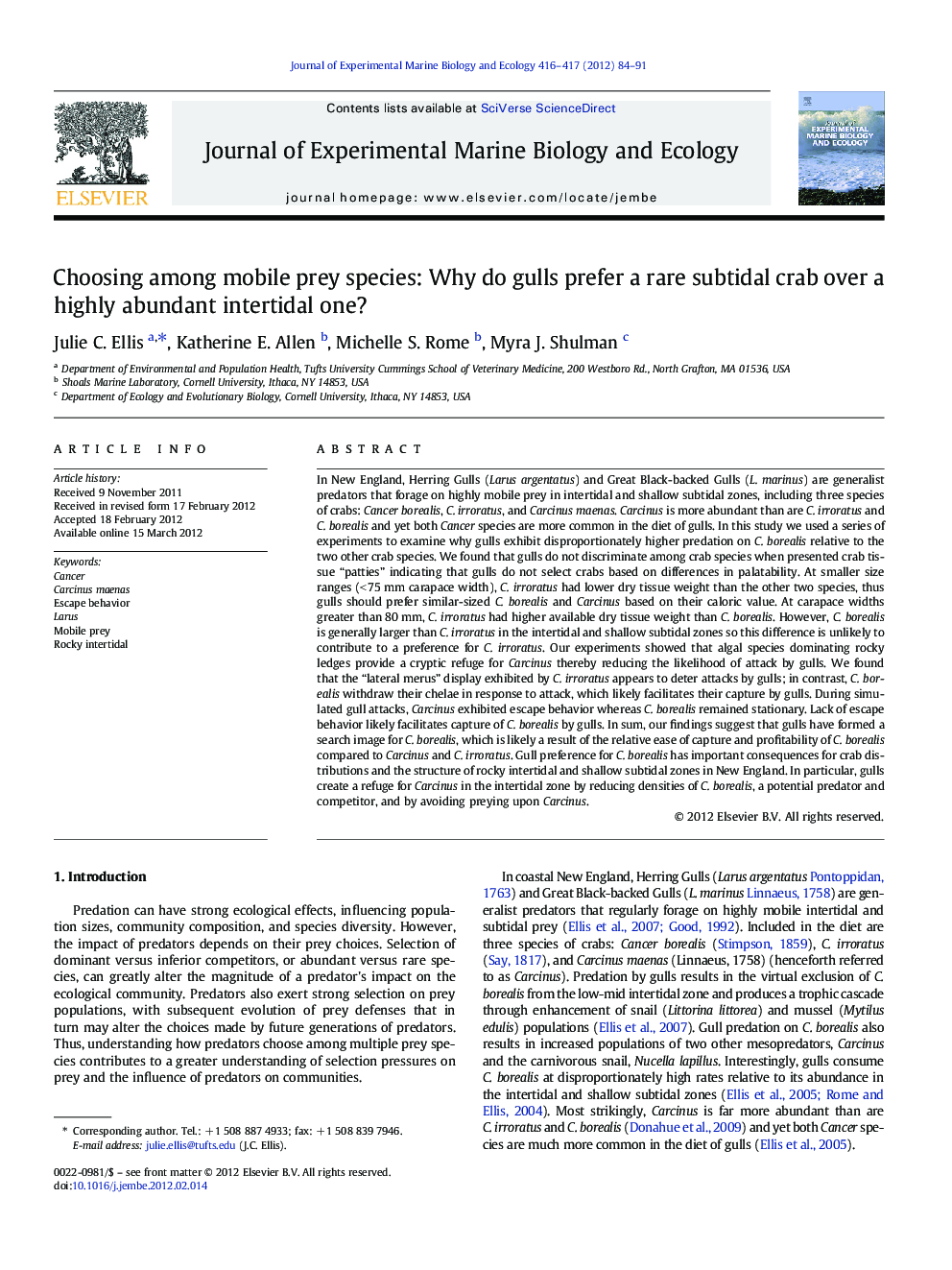| کد مقاله | کد نشریه | سال انتشار | مقاله انگلیسی | نسخه تمام متن |
|---|---|---|---|---|
| 4396095 | 1618449 | 2012 | 8 صفحه PDF | دانلود رایگان |

In New England, Herring Gulls (Larus argentatus) and Great Black-backed Gulls (L. marinus) are generalist predators that forage on highly mobile prey in intertidal and shallow subtidal zones, including three species of crabs: Cancer borealis, C. irroratus, and Carcinus maenas. Carcinus is more abundant than are C. irroratus and C. borealis and yet both Cancer species are more common in the diet of gulls. In this study we used a series of experiments to examine why gulls exhibit disproportionately higher predation on C. borealis relative to the two other crab species. We found that gulls do not discriminate among crab species when presented crab tissue “patties” indicating that gulls do not select crabs based on differences in palatability. At smaller size ranges (< 75 mm carapace width), C. irroratus had lower dry tissue weight than the other two species, thus gulls should prefer similar-sized C. borealis and Carcinus based on their caloric value. At carapace widths greater than 80 mm, C. irroratus had higher available dry tissue weight than C. borealis. However, C. borealis is generally larger than C. irroratus in the intertidal and shallow subtidal zones so this difference is unlikely to contribute to a preference for C. irroratus. Our experiments showed that algal species dominating rocky ledges provide a cryptic refuge for Carcinus thereby reducing the likelihood of attack by gulls. We found that the “lateral merus” display exhibited by C. irroratus appears to deter attacks by gulls; in contrast, C. borealis withdraw their chelae in response to attack, which likely facilitates their capture by gulls. During simulated gull attacks, Carcinus exhibited escape behavior whereas C. borealis remained stationary. Lack of escape behavior likely facilitates capture of C. borealis by gulls. In sum, our findings suggest that gulls have formed a search image for C. borealis, which is likely a result of the relative ease of capture and profitability of C. borealis compared to Carcinus and C. irroratus. Gull preference for C. borealis has important consequences for crab distributions and the structure of rocky intertidal and shallow subtidal zones in New England. In particular, gulls create a refuge for Carcinus in the intertidal zone by reducing densities of C. borealis, a potential predator and competitor, and by avoiding preying upon Carcinus.
► Gulls prefer Cancer borealis over two other available species of crab.
► We tested for differences in crypticity, behavior, profitability, and palatability.
► Cancer borealis is preferred because of its ease of capture and profitability.
► Gulls create a refuge for Carcinus maenas by reducing densities of C. borealis.
Journal: Journal of Experimental Marine Biology and Ecology - Volumes 416–417, 15 April 2012, Pages 84–91